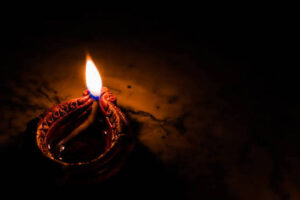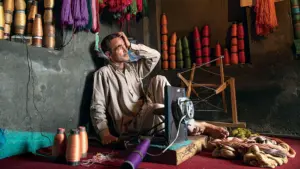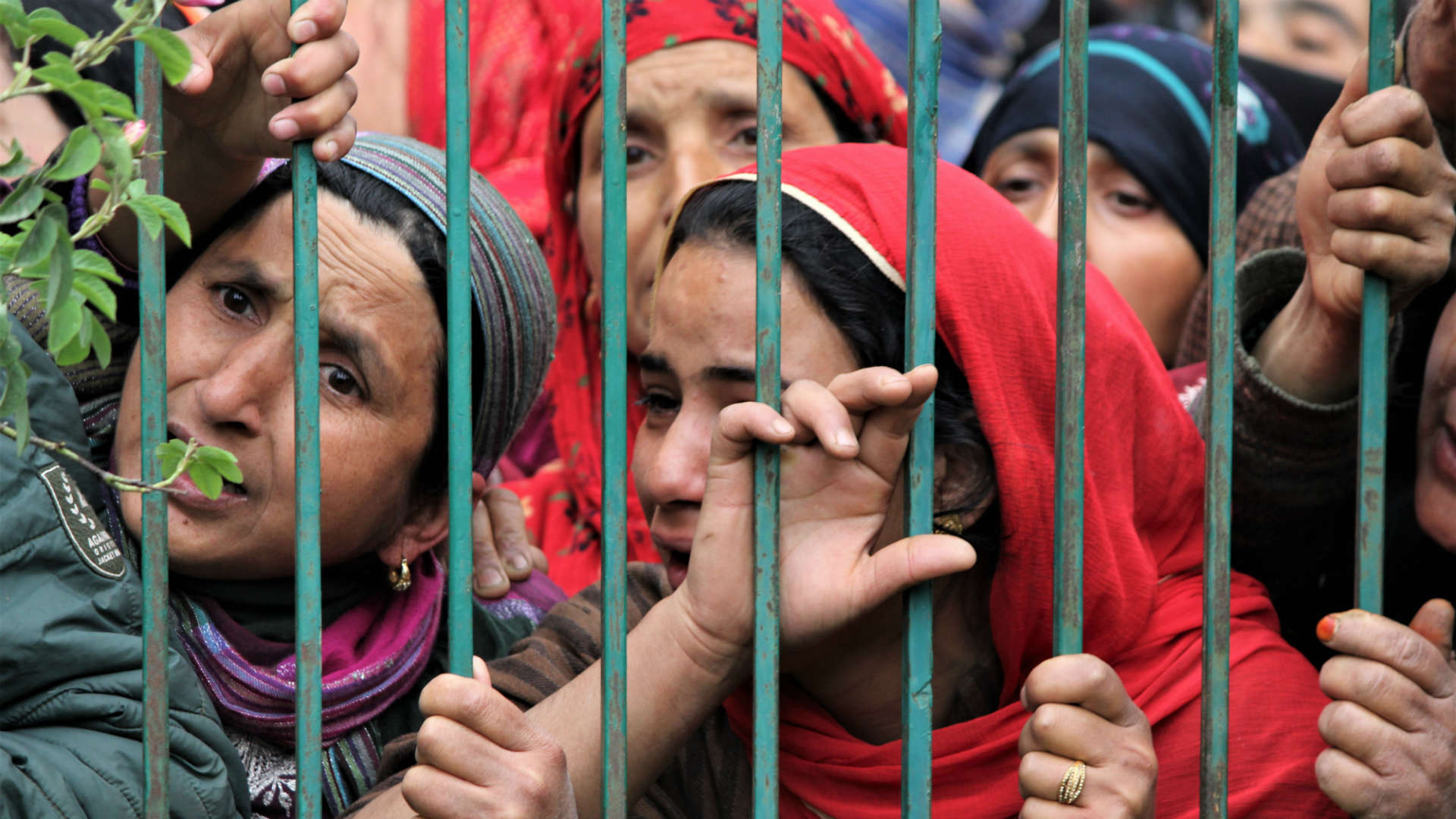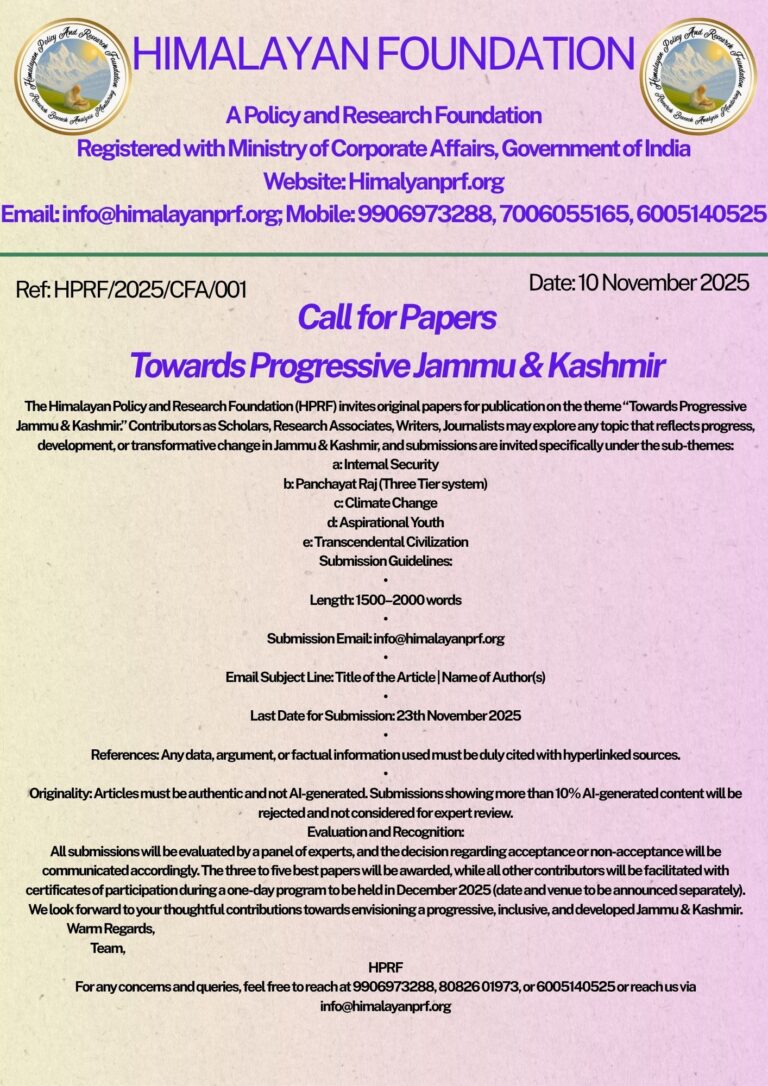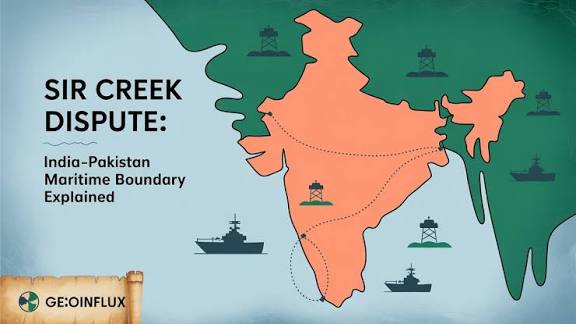By: Dr Safia Yousuf ( Independent Researcher)
The place of women in Kashmir’s long history has never been marginal. They have been central to the making of Kashmiri identity, to its cultural imagination, and to the rhythms of its everyday life. Yet the arc from Lal Ded, who in the fourteenth century embodied mystical defiance against orthodoxy, to Habba Khatoon, whose poetic voice lent words to dispossession and exile, to the widows of the present who live suspended in uncertainty, is an arc that traces the systematic silencing of women under violence. Women in Kashmir were once not merely the chroniclers of grief but the creators of cultural meaning, shaping moral and spiritual vocabularies that sustained the society. The tragic inversion of this genealogy is that in the present, women’s lives have been reduced to symbols of suffering, their voices instrumentalized but not heard, their agency stifled by violence , patriarchy, and the engineered modalities of conflict that have marked Kashmir for over three decades.
The conflict in Kashmir is not episodic but enduring. Since the late 1980s, it has unfolded as a layered confrontation sustained through insurgency and counterinsurgency. This temporality matters: it is not a war that begins and ends with a decisive transition but one that produces an unending present. It is this continuity that distinguishes women’s suffering. For men, death in combat or disappearance at the hands of different actors is often the culminating event; for women, the consequences extend long after the moment of violence. Widowhood is not simply a personal condition; they are structural positions that reorganize the texture of social life. A widow becomes a breadwinner without means, navigating precarious labor while sustaining her family in an environment where state bureaucracy is hostile and social networks are eroded. A widow is trapped in an even crueler liminality, denied inheritance, denied remarriage because his fate remains unresolved. Her life is an indefinite suspension between presence and absence.
The figures of widows testify to the peculiar temporality of violence in Kashmir. They embody the way war does not end with the cessation of the act but continues through the everyday burdens it imposes on women. This is violence by endurance, where the injury lies not only in the event but in its afterlife. The economic consequences are profound. In a society where men traditionally bore the responsibility of provision, their loss thrusts women into labor markets that are precarious, poorly remunerated, and exploitative. Women enter this terrain not as empowered agents but as desperate survivors. Their labor becomes invisible precisely because it is performed under necessity, tethered to the household even as it sustains the household. Conflict has not emancipated women; it has burdened them with dual responsibilities that reinforce rather than dismantle patriarchal hierarchies.
The body itself has been transformed into a site of domination. Sexual violence has been both a weapon and a stigma. Sexual violence here is not only about the violation of the individual body; it is about the symbolic assertion of power over the community, a way of communicating both the vulnerability of women and the impotence of men. It is designed to fracture kinship structures, to inscribe humiliation into the very fabric of everyday life. The afterlife of such violence is even more devastating than the act itself: silence, ostracization, and shame. To speak is to risk exclusion; to remain silent is to carry a corrosive secret. The victim is punished twice – once by the perpetrator and once by her own society.
The very roles of mother, sister, and wife have been conscripted into the courier networks of violence. A mother mourning her son becomes an emblem of grief, photographed and circulated as testimony, but denied a voice in determining the politics of reconciliation. A sister carrying a message becomes a suspect body, watched and harassed. In each case, women’s relational roles are weaponized, their intimacy turned into terrain for the exercise of power. Even the womb has not been spared: reports of mutilation and sexual torture reveal the deliberate targeting of women’s reproductive capacity, a form of violence that strikes not only at the individual but at the very continuity of the community.
The psychological consequences of this protracted violence are devastating. Surveys conducted by Medecins Sans Frontieres in 2006 revealed that nearly one-third of Kashmiri women suffer from severe mental distress, while more recent field studies indicate pervasive depression, anxiety, and post-traumatic stress disorder. These are not abstract clinical diagnoses but lived realities that affect women’s ability to sustain families, to care for children, to participate in society. Mental health here is inseparable from structural violence: the loss of kin, the stigma of sexual assault, the uncertainty of widowhood, the precarity of survival. Women live in an unending present of grief, where trauma is not past but continuous. This trauma is transmitted intergenerationally, as children inherit not only the absence of fathers but the muted suffering of mothers whose lives are defined by endurance.
The cultural degradation that follows is no less severe. The Kashmiri moral imagination, once shaped by the mystical humanism of Lal Ded and the lyrical tenderness of Habba Khatoon, is now overshadowed by silence and shame. The very norms that were supposed to safeguard women’s honor have become instruments of control, ensuring their silence and perpetuating their suffering. Sexual violence becomes unspeakable not only because of fear of the perpetrator but because of the fear of ostracization. The burden of honor is placed upon women’s bodies, and when those bodies are violated, it is the women who are shamed rather than the perpetrators. The result is a corrosion of cultural confidence, a society where the poetic voice of women is replaced by muted grief and enforced silence.
Women’s suffering has been politicized even as it has been marginalized. The image of the grieving mother or the waiting widow circulates in public discourse as testimony to the tragedy of Kashmir. Yet this representation reduces women to symbols, denying their complex subjectivities. They are mobilized as icons of resistance but not recognized as political agents. Their voices are appropriated but not authorized. The authority to define the conflict remains overwhelmingly masculine – articulated in the language of state security, resistance, or even human rights advocacy -while women remain enduring witnesses whose testimonies are dismissed as partial or emotional. This paradox is central: women constitute the most persistent witnesses of violence, yet their authority is systematically denied.
The genealogy of Kashmiri women -from Lal Ded to Habba Khatoon to the widows -reveals both continuity and rupture. Continuity, in that women have always borne the burden of articulating suffering and endurance; rupture, in that the autonomy and creativity once associated with Kashmiri women has been replaced by silence and stigmatization. Where Habba Khatoon could speak of exile and longing in verse, today’s Kashmiri women live those exiles and longings in silence. This is not a natural evolution but a deliberate inversion, the result of engineered violence that has targeted women as the central terrain of domination.
To speak of women as the primary victims is not to deny the suffering of men but to illuminate the distinct modalities of injury that women endure. These include widowhood, sexual violence, economic dispossession, mental trauma, social ostracization, and cultural silencing. These injuries are cumulative, intergenerational, and enduring. They reorganize the very fabric of Kashmiri society. They transform the household, corrode kinship networks, destabilize communities, and erode cultural confidence. They produce not only immediate suffering but long afterlives of suffering that shape the lives of entire generations.
And yet women are not only victims. To portray them solely as sufferers would repeat the logic of invisibility. Women in Kashmir have organized associations, pursued cases through labyrinthine courts, sustained households against impossible odds, and even entered political activism despite severe constraints. But this agency is fragile, constrained, and often unrecognized. It is resilience born of necessity, not of freedom. To acknowledge it is not to romanticize it but to register the paradox of strength under duress.
The measure of justice in Kashmir cannot be limited to ceasefires or political accords. It must be judged by whether the lives of women are acknowledged, their legal limbos resolved, their health addressed, their dignity restored, and their voices heard. Without this, any settlement will remain incomplete, for it will have ignored those who have borne the heaviest burdens. Women are not appendages to men’s stories of violence ; they are the central protagonists whose lives embody the real costs of conflict. They are the genealogical link between the cultural imagination of Lal Ded and Habba Khatoon and the scarred present of widowhood and silence. To recognize them as primary victims is not to sentimentalize but to confront the hardest truth of Kashmir: that the violence of the gun has been compounded by the violence of endurance, and that this endurance has been borne disproportionately by women.
Any serious attempt to imagine a future for Kashmir must therefore begin with women. Their lives are not marginal footnotes but central texts of the conflict. Their suffering is not incidental but constitutive. Their recognition is not optional but necessary. The measure of peace will not be whether the valley falls silent, but whether the women of Kashmir -heirs to a genealogy that once spoke through Lal Ded and Habba Khatoon -can once again speak, not as symbols of grief, but as subjects of justice, dignity, and freedom.



